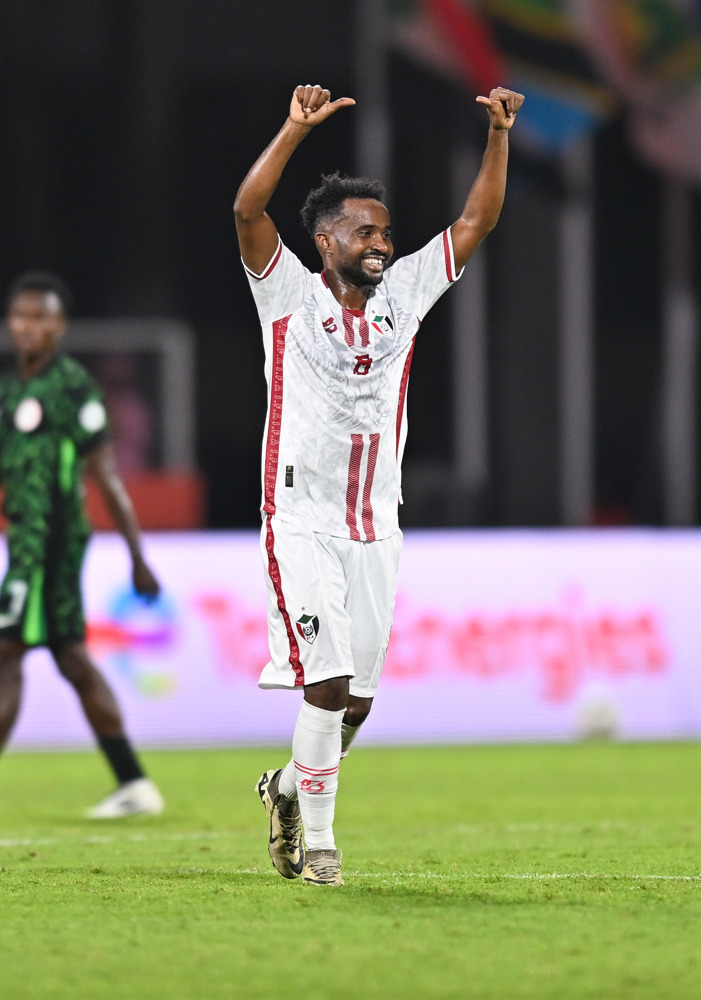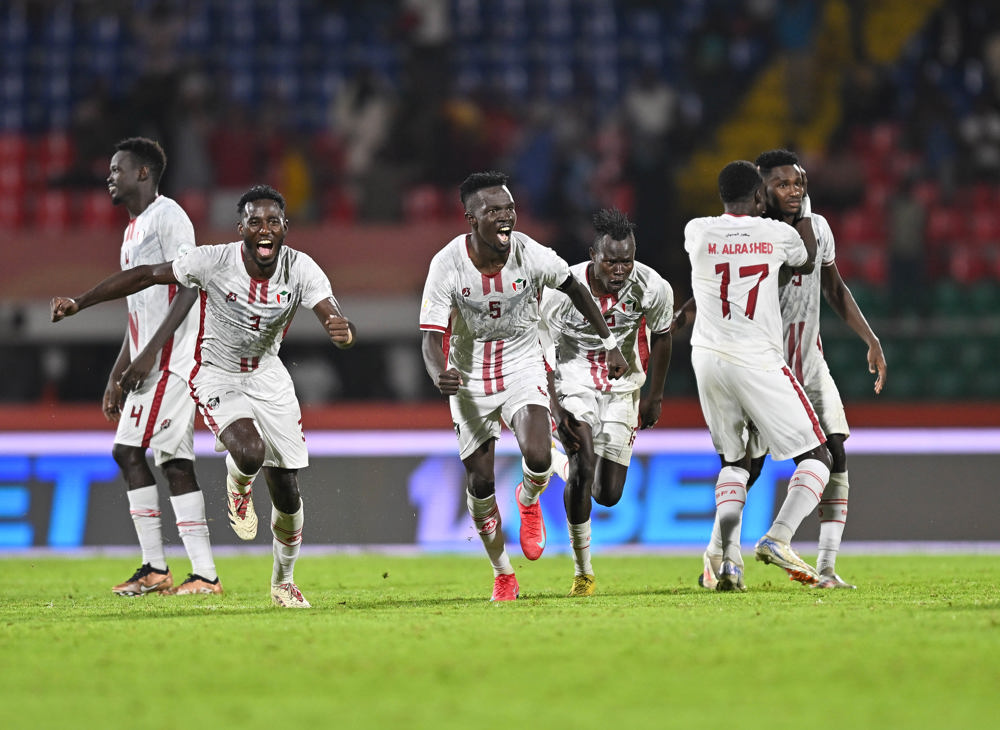Introduction
Clinical engineering is a rapidly evolving branch of engineering and technology that has a direct impact on the healthcare system. This evolution has occurred due to a transition from the previous century when predicting the useful life of medical equipment for patient care was challenging. In the past, unsophisticated medical equipment had a useful life of up to twenty years. Consequently, the replacement of equipment occurred sporadically, typically only when the last unit failed completely. However, with rapid advancements in technology, this is no longer the case. High-tech medical equipment now often becomes obsolete after only five years. To maintain competence in healthcare delivery, equipment must be replaced once it reaches obsolescence. As a result, the field of clinical engineering has become increasingly professionalized and technologically advanced.1
For this projection to be effective and the domain to provide vast benefits to the healthcare system, it is essential that healthcare institutions employ an adequate number of professionally trained clinical engineers and technicians. Over the past two decades, healthcare institutions have been reducing their staffing levels in clinical engineering. In today’s economic environment, there is still intense pressure to reduce the operating costs of providing healthcare. This pressure comes from policies of third-party payers, increasing competition among providing institutions, and a general realization that healthcare expenditure must be contained.2,3
Efficient administration of technical resources may reduce costs, create helpful information for administrators, and improve the quality of healthcare services. To achieve these objectives, the clinical engineering departments (CED) must be appropriately sized and have sufficient engineers, technicians, and administrative personnel to handle the activities and equipment. Productivity has been a challenging subject for CEDs for over thirty years and is expected to continue due to the increasing pressure to reduce healthcare expenses. CED productivity is directly tied to CED benchmarking, which involves measuring and comparing CED operations among institutions. Labor costs are often the greatest component of overall costs in the service business.4,5
Hospital executives often assess the cost-effectiveness of their CED by comparing personnel levels, staffing is simpler to quantify than productivity, despite being two sides of the same coin. Staffing data may be obtained from payroll using headcount or full-time equivalent (FTE). In 2004, the Association for the Advancement of Medical Instrumentation (AAMI) commissioned research on CE benchmarking, leading to the establishment of consultancy services by both AAMI and the Emergency Care Research Institute (ECRI). The first large-scale benchmarking research was released in 2008, and further assessments were published by AAMI and ECRI Institute. Wang et al’s benchmarking study identified numerous markers for clinical engineering (CE) staffing. Some hospital officials raised concerns about the number of full-time employees in their CE departments. Evans provided a more complex model for CE staffing, contradicting the signs given by Wang et al. Since then, other investigations and models have been published. This project will evaluate staffing strategies and productivity in the Clinical Engineering Department. It also will present a methodology for estimating and assessing CE personnel.4–7
Over the past 50 years, healthcare institutions in technologically advanced countries like the United States, Canada, France, Germany, the United Kingdom, the Netherlands, and Sweden have hired technical and engineering staff to manage biomedical equipment effectively. This was especially important in the United States because of the numerous safety-related laws, regulations, and technical standards that compelled hospital managers and academic authorities to launch programs for the establishment of clinical engineering services within hospitals. The Joint Commission for Accreditation of Hospitals (J.C.I.) established rules for providing high-quality services. The number of engineers and technicians in US hospitals increased from roughly 3000 in 1973 to almost 10,000 in 1980, since then, the number of clinical engineers has grown at an average annual rate of 11.5%.3,7,8
Efficient utilization of limited resources is crucial in nations where governments struggle to provide basic healthcare. In underdeveloped nations, the primary issue is not a shortage of equipment, but rather the fact that up to 75% of the delivered equipment is unusable. Equipment may not be installed or used due to inadequate infrastructure (eg, insufficient premises, untrained staff) or breakdowns that cannot be repaired due to a lack of spare parts or qualified technicians. Over the last two decades, the World Health Organization (WHO) has focused resources on educating maintenance technicians and, to some extent, higher-level workers to address these shortcomings. However, as there was only one link in a much longer chain that represented an effective management system, it was discovered that technician training alone was not enough to address the issues.4–7
The CED is now recognized as the best structure for effectively handling biomedical technologies. In the past, all CEDs were required to do fundamental duties such as acceptance testing, repair, and preventive maintenance of medical equipment. These days, the scope of practice for a clinical engineer has expanded to cover not only the purchase of biomedical equipment to ensure safe and appropriate decisions but also the management of this equipment to provide continuous control over the state of technological resources, the selection of staffing levels requires careful consideration of the criteria to be used, just as in any other hospital department.4,9–12
Based on research and experience, a significant finding is revealed. Most of the time, changes to the CED staff are made gradually until the final structure is reached; in other words, initially, there was just one clinical engineer and maybe one technical or administrative assistant, and more staff members were added as needed. Previously, Clinical Engineering was viewed with suspicion and undervalued, but it has since shown its effectiveness. Efficient administration of technical resources may reduce costs, create helpful information for administrators, and improve the quality of healthcare services.11
The healthcare sector in Saudi Arabia is experiencing a significant transformation as part of the Kingdom’s ambitious Vision 2030 initiative. This strategic plan aims to diversify the economy, reduce reliance on oil revenues, and enhance the overall quality of life for its citizens. A critical aspect of this transformation is the improvement of healthcare services, which includes the effective management of medical technology. Biomedical Engineering Departments (BMDs) play a vital role in this regard, as they are responsible for overseeing the management, maintenance, and optimization of medical equipment and technology within healthcare facilities.13,14
In developed nations, CEDs and clinical engineers are well-established and play essential roles in hospital operations, including the assessment, acquisition, implementation, and safety of medical technology. However, in developing countries, including Saudi Arabia, the importance of CEDs needs to be more acknowledged. The shortage of skilled professionals in health technology management poses a significant challenge, especially given the rapid advancements in medical technology. This gap underscores the necessity for a structured approach to staffing and resource allocation within CEDs to ensure the efficient management of medical devices and technology.13–16
National Guard Health Affairs (NGHA) hospitals are government-funded health system in the Kingdom of Saudi Arabia, established in 1983. It operates a network of medical facilities across several regions, including Riyadh, Jeddah, Al-Ahsa, Dammam, Medina, Taif, and Qassim, providing comprehensive healthcare services primarily to National Guard personnel and their families.17
The NGHA in Saudi Arabia has been actively working to align its healthcare services with the objectives of Vision 2030. This involves not only enhancing the quality of healthcare but also ensuring that the necessary human resources are available to support these advancements. Biomedical engineers are increasingly taking on leadership roles in the design, renovation, and commissioning of healthcare facilities, making their expertise indispensable to the success of these initiatives.13,18 Despite the growing recognition of the importance of CEDs, there is a notable lack of published research and benchmarks regarding CED staffing in Saudi Arabia or the Gulf Cooperation Council (GCC) region. This knowledge gap complicates decision-makers’ ability to determine the appropriate number of staff required for CEDs and allocate resources effectively. Key factors such as the total number of beds, hospital area, total staff, number of medical devices, and the cost of medical technology are all critical variables that influence the staffing needs of CEDs. Understanding these variables and their interrelationships is essential for developing a reliable staffing model that can support the effective operation of CEDs.13,14
Several models have been proposed to determine optimal staffing levels in the CEDs. For instance, the German Ministry of Research and Technology sponsored a program to develop CEDs that was later called The Irnich Model. By analyzing the program’s results conducted in ten hospitals, it was possible to see how all the services performed significantly in terms of cost savings. The aim of the study was to determine which structural parameter had the biggest impact on cost savings. Correlations between the number of beds, investments, savings, and employees working in the centres were established with this goal in mind. When the number of beds was used as a parameter, good results were discovered. After the total number of technicians has been computed, the number of clinical engineers may be ascertained, with the appropriate ratio being one engineer for every five or six technicians. To assure additional tasks, such as administration, record keeping, professional training, etc., the addition of other technical and administrative staff is essential to these personnel, with the total number projected to be equivalent to 40% of the prior. This model’s weakness is that it bases size on the values of a small number of factors, making the outcome highly contingent on the assigned values. Furthermore, these figures can only be precisely calculated if the CED remains operational. However, if the activities need to be planned ex novo, it is challenging to estimate them.9,10,17
Frize’s survey of CED managers in Europe and the USA provided 116 complete questionnaires. The repurchasing value of the equipment was found to be the most effective parameter for estimating the optimal number of service components, considering the number of beds, equipment, and repurchasing value. Based on the information from the surveys, the repurchasing value of the equipment was the variable that had the strongest relationship with the total number of technical service components.16 It is feasible to utilise the quantity of equipment as the sizing parameter in the absence of data on the equipment’s repurchasing value.4,8,10 Frize’s conclusions about the size of CED can be summed up as follows:
- One technician for every 400 pieces of equipment or $1 to 1.5 million in repurchasing value of the equipment.
- One engineer for every three to five technicians.
- One head technician for every eight to twelve technicians,
- Eight to ten technicians and engineers for every clerk.
- Warehouse: 1% of the equipment’s repurchasing value.
- Space: 25 m’ per person.
- Testing equipment: 1% of the equipment’s repurchasing value.
This technique looks straightforward to deploy, as needed data may be simply acquired from a biological equipment inventory. However, the model lacks flexibility in sizing services based on organizational choices. For instance, it cannot account for activities that are only performed for a subset of equipment.4,10,19
The Lamberti model’s importance lies in its capacity to account for various organizational tactics, such as estimating staff needs according to the activities and equipment assigned to the CED. A CED’s staffing needs may be estimated via the Lamberti model based on the task that has to be completed. The tasks that the Department must do, the parameters that allow for the estimation of the related workload, and the connection between the parameters and the related workload must all be specified in order to estimate the workload.10,20 Although various methods have been developed to determine staffing levels in CEDs. Each method presents unique challenges that complicate the establishment of a universal standard for staffing. These methods possess both theoretical and practical advantages, as well as limitations, which are summarized in Table 1.4
|
Table 1 Theoretical and Practical Advantages and Disadvantages of Each Indicator for Clinical Engineering (CE) Staffing or Productivity Benchmarking
|
To address these limitations, there is a need for more sophisticated models that can account for a wider range of factors, including the complexity of equipment, the level of technical expertise required, and the specific needs of the healthcare facility. In order to achieve these goals, the CED’s size must be appropriate, meaning that the number of engineers, technicians, and administrative people it employs must match the tasks it is meant to do and the amount of equipment it is meant to oversee. Some models have been provided in the other studies in order to predict a priori the size of the staff and its distribution among engineers and technicians. Table 2 highlights the need for a hybrid, adaptable model that integrates both quantitative and qualitative data for more accurate staffing predictions.11
 |
Table 2 Limitations of Existing Clinical Engineering Staffing Models
|
The present study aims to explicitly address the challenges in Clinical Engineering Departments (CEDs) staffing and workload balance within National Guard Health Affairs (NGHA) hospitals. Specifically, its objectives are to create and validate a score model through the hybrid model approach to manage staffing and workload allocation in Clinical Engineering Departments (CEDs) in NGHA hospitals. The project objectives in detail include: (1) Identifying the main variables that affect the level of staffing required through the use of maintenance data by conducting a quantitative analysis; (2) Complementing the quantitative analysis with qualitative input from subject-matter experts to provide deeper understanding of the dynamics of workload; and (3) Generating an adaptable and scalable model that will allow for resource planning based on evidence within a healthcare setting and validating it at the King Abdullah Specialized Children’s Hospital (KASCH).
Materials and Methods
Ethical approval for conducting this study was obtained from the Institutional Review Board (IRB) at King Abdullah International Medical Research Center (KAIMRC) under approved IRB No.: 0000056524.24 All participants provided informed consent in line with the Declaration of Helsinki. The research methodology for this study combines quantitative and qualitative analyses. The quantitative analysis involves gathering historical data from the Computerized Maintenance Management System (CMMS) and Oracle E-Business Suite at the King Abdullah Specialized Children Hospital (KASCH), part of NGHA. This data collection includes comprehensive asset inventories, preventive maintenance (PM), and corrective maintenance (CM) work order histories spanning five years (2020–2024), along with PM forecasts projected for 2025–2029. Historical data were utilized to calculate the duration of PM and CM tasks, including specific tasks such as device localization, paperwork completion, and parts procurement. These durations were aggregated per device model and adjusted based on device aging to ensure accurate workload predictions.25–27
Subsequently, the quantitative analysis involved calculating the annual preventive and corrective maintenance workload for each technologist, factoring in the specific types and complexities of assigned medical devices. This data provided an essential foundation for developing predictive workload models and staffing estimations. Additionally, qualitative data were gathered via structured surveys, targeting clinical engineering staff across multiple hospitals within NGHA. These surveys aimed to understand staffing practices, workload distribution strategies, compliance challenges, and departmental operational dynamics, providing qualitative context to complement and validate quantitative findings.28 The combination of these methods enabled the comprehensive evaluation of current staffing practices and the identification of gaps, thus forming a robust methodological framework for achieving the study’s objectives.
Quantitative Model
The study relied heavily on detailed data analysis to predict workload and staffing requirements accurately. Initial data was sourced from the CMMS and Oracle E-Business Suite systems utilized by the biomedical engineering department.29 Comprehensive asset inventory data encompassed the identification, type, quantity, and operational status of medical devices. Historical work order records covering a period from 2020 to 2024 provided insights into both preventive and corrective maintenance activities, enabling the calculation of average durations required for these tasks on a per-device basis. This historical analysis accounted for variations in workload due to device complexity, device aging, and frequency of maintenance.27
Data Collection
Data was obtained from The King Abdullah Specialized Children Hospital (KASCH) at NGHA-Biomedical Engineering Department’s Computerized Maintenance Management System (CMMS) and Oracle E-Business Suite. The following Table 3 illustrates the characteristics of data set, calculation, formula used and model validation.
 |
Table 3 The Characteristics of Data Set, Calculation, Formula Used and Model Validation
|
Device Complexity Classification
Device features were evaluated in a multi-criteria treatment for both operational and technical aspects.19 Major factors were the importance of the device function (life-support equipment versus non-critical monitoring devices),3 the amount and interval of servicing, and the mean time to perform preventive and corrective services.26 The technical specifications of the system including software interfaces, imaging mode and calibration needs were other factors also taken into account. It also considered manufacturer recommended maintenance intervals and risk classes as specified by international standards, which include IEC 60601 and World Health Organization (WHO) device risk frameworks.28 According to this evaluation, devices like magnetic resonance imaging (MRI) systems, computed tomography (CT) scanners, ventilators, and anesthesia units were labeled as high-complexity, and weighing scales, digital thermometers, and electrocardiography (ECG) were considered low-complexity because of their reduced technical requirements and less operational risk.
Normalisation of Workload per Device
Data of workloads for each medical device was normalised to provide accurate and comparable workloads across the equipment portfolio.11 This normalization was subject to various adaptations. First, requests were classified as type, type being an emergency and scheduled maintenance order. Second, maintenance routines were deconstructed into the component maintenance activities – device localisation, parts ordering and documentation (among others) – to obtain an accurate estimate of the amount of time spent.12 Third, the model included the concept of device aging, and modified the performance and failure rates to capture the increased maintenance workload for aging hardware. In addition, recent trends (recurrent failures, repair frequencies) were reviewed to avoid work load predictions being distorted by outliers, (clusters, technician specific differences). Overall, these normalization processes improved model accuracy and reduced bias and permitted valid comparisons across devices and more reliable staffing estimates.4,14
Qualitative Model
The study included insights from a qualitative survey conducted among biomedical engineering staff from CEDs across various hospitals within the NGHA system. The qualitative survey aimed to gather comprehensive data on staffing practices, workload distribution strategies, compliance challenges, and departmental operational dynamics.30 Participants included biomedical engineers, clinical engineering managers, clinical engineers, and biomedical engineering technicians, ensuring diverse and representative insights. Questionnaire the questionnaire utilized in this study was a structured one and consisted of 23 items. Internal consistency was evaluated with Cronbach’s alpha, which was 0.82 indicating good reliability.29 In addition, to ensure inter-rater reliability, three separate reviewers reviewed and refined the survey tool prior to its disseminating. Consensuses meetings resolved any discrepant interpretation of items in order to maintain uniformity and the content validity of the test.31
The survey consisted of 23 structured close-ended questions, covering topics such as preventive maintenance (PM) compliance, device assignment strategies, project tracking, staff responsibilities, and perceived impacts of technological advancements. The sample size was determined using the Yamane method, ensuring representativeness and reliability of the data.32 Data collection was conducted through an electronic survey platform, and responses were systematically coded and thematically analyzed to identify key trends, common practices, and operational challenges faced by CEDs. The following Table 4 describes the full details of the survey conducted.33 This includes the participants, content, targeted population, inclusion criteria, and exclusion criteria.
 |
Table 4 Details of the Survey Conducted
|
Hybrid Model
This model integrates qualitative insights (survey responses) and quantitative data (PPM/workload metrics) to optimize staffing, reduce costs, and improve equipment reliability. The core principles of this model are:
- Risk-Based Staffing: Prioritize resources for high-risk, high-complexity devices (eg, MRI, ventilators).
- Hybrid Workforce: Combine in-house teams for routine tasks with outsourced specialists for advanced technologies.
- Predictive Maintenance: Use IoT and AI to shift from reactive repairs to proactive prevention.34
- Scalability: Adapt to technological advancements (eg, AI-driven devices, robotics).
Figure 1 depicts the visual structure diagram of the hybrid model for staffing and workload balance.
 |
Figure 1 Visual diagram of the Hybrid Model for Staffing and Workload Balance.
|
Results
Quantitative Analysis of PPM Data
Table 5 depicts the calculation of data collection over the period of 2020–2024. This included PM duration, CM duration, and workload prediction of every engineer according to the specific machine (model/manufacturer). These calculations give an estimated annual workload in hours per device, categorized by device model.
 |
Table 5 Calculations for Total Estimated Annual Workload per Device
|
Below is a structured breakdown of the PPM (Planned Preventive Maintenance) data, focusing on workload distribution, efficiency gaps, and equipment demands:
Workload Distribution by Engineer
Table 6 illustrates the workload distribution by group of Engineer. From this table we can note that the Group1 spends the most time per device (1.29 hours), likely due to high-complexity equipment. While Group 2 manages the largest inventory (1653 devices) but operates at only 29% utilization, indicating inefficiency or understaffing. On the other hand, Group 4 handles 59% of all devices but operates below 50% capacity.
 |
Table 6 Workload Distribution by Engineer
|
High-Maintenance Equipment
Table 7 shows the high-maintenance equipment by group of Engineer. The analysis figures out that the MRI machines require 42.1 hours/device/year, making them the most maintenance intensive. While ventilators and anesthesia units also demand significant resources.
 |
Table 7 High-Maintenance Equipment
|
Preventive Maintenance vs Repairs
Table 8 shows the preventive maintenance vs This table indicates that the reactive repairs dominate workload, suggesting gaps in preventive strategies.
 |
Table 8 Preventive Maintenance Vs Repairs
|
Workload per Device Category
Table 9 shows the workload per device category. The table illustrates the high-risk devices (eg, MRI, ventilators) require 5–10x more time than low-risk devices (eg, scales).
 |
Table 9 Workload per Device Category
|
FTE Availability and Productive Hour Calculations
Calculating each device’s annual preventive and corrective maintenance workload helps identify the maintenance responsibilities an engineer will manage based on their device portfolio. Productive work hours at KASCH the calculation of productive work hours per Engineer was done as shown in Table 10.
 |
Table 10 Summary of the Breakdown of hours for 1 FTE
|
FTE Requirement Calculation for Clinical Equipment Maintenance
Total PM and CM workload was calculated from all active clinical devices (11,876 devices) included in the Feb 2025 Asset Extract, 15% can include as an estimated percentage of total PM and CM of time needed to complete miscellaneous work and projects as given in Table 11.
 |
Table 11 Calculation for Total Annual Estimated Time Required to Maintain KASCH Devices
|
As mentioned before, an 80% productivity factor per engineer per year converts into 1132.8 hours of “chargeable” work annually, or one FTE, the number of engineers required to complete the whole amount of expected work at KASCH each year may be determined using this assumption. The following is the method used to figure out the calculation:

The quantitative analysis highlights critical inefficiencies in workload distribution, underutilization of staff, and excessive repair costs for high-risk devices. By reallocating resources, investing in preventive strategies, and adopting technology, CEDs can achieve 20–30% cost savings and improve equipment uptime to >95%. Therefore, for optimization the model recommends:
- Staff Reallocation: Shift underutilized engineers (eg, Engineer 2) to high-demand areas (eg, MRI/CT maintenance).
- Predictive Maintenance: Increase PPM compliance for critical devices to reduce repair workload (target 1:1 PPM/repair ratio).
- Hiring/Training: Recruit 2–3 specialists for MRI/CT systems and certify existing staff on IoT/AI-driven devices.
- Technology Integration: Deploy CMMS tools to automate scheduling and prioritize high-risk equipment.
FTE Estimation Confidence and Sensitivity Analysis
The FTE need forecasted downstream at KASCH 15.1 FTE, estimated by 17181 hours of workload per year divided by 1132.8 productive hours per FTE per year. To test the robustness of such an estimate, a sensitivity analysis was undertaken in which the productivity parameter was varied across a plausible range of operating efficiencies in consideration of varying staffing availability as a result of annual leave, absence due to sickness and variation in the degree of efficient working. If 1000 hours/FTE is used for the work rate, then 17.2 FTEs was required. Requiring 1200 hours per FTE in the denominator resulted in an estimated need for 14.3 FTE (Figure 2). This is significantly different from the value represented by 15.8 FTEs, providing 95% CI [14.3–17.2] FTEs, which covers staffing shortage in the realistic setting. These results illustrate the resilience and applicability of the model in other productivity environments, and they also reinforce the meaningfulness of the model as a reliable decision-making instrument for staffing clinical engineering departments.
 |
Figure 2 Survey results for years of experience of Clinical Engineering staff in NGHA.
|
Qualitative Analyst
Respondents and Their Experience
The survey results indicate a diverse representation among respondents, biomedical engineers (48%), clinical engineering managers (24%), clinical engineers (14%), biomedical engineering technicians (5%), technicians (5%), and others (3%). Notably, a wide range of experience levels was observed, with the largest group (48%) reporting 6–10 years in their current roles, suggesting a moderately experienced workforce (Figure 2).
Infrastructure and Technological Dynamics
In terms of institutional context, 72% of respondents work in general hospitals, while the remaining 28% are employed in specialized settings. Hospital size also varied considerably, with the largest subset of respondents (29) operating in facilities with more than 500 beds. The findings further reveal that a substantial number of respondents (36) manage portfolios exceeding 5000 medical devices; however, only a small proportion (11–30%) of these devices are classified as highly complex (Figure 3).
 |
Figure 3 Survey results for a number of medical devices managed by Clinical Engineering Departments in NGHA.
|
Additionally, the dynamic nature of clinical technology is underscored by the fact that new equipment is introduced on a monthly basis, and advancements in medical technology are perceived as significantly increasing the need for specialized clinical engineering expertise. Table 12 shows the most significant challenges that the department faces in maintaining appropriate staffing levels.
 |
Table 12 Frequency of Staffing Challenges in CEDs
|
Departmental Responsibilities
Departmental responsibilities predominantly include equipment calibration, procurement, disposal, regulatory compliance, as well as corrective and preventive maintenance. A notable 21 respondents indicated that their department consistently provides direct clinical support during procedures, while 35 respondents reported that equipment maintenance is performed Daily (Figure 4).
 |
Figure 4 Survey results for frequency of equipment maintenance performed by Clinical Engineering Departments staff in NGHA.
|
Regulatory and Technological Impact
Significance of Compliance in Staffing: Average rating: 4.2/5 (1 = low, 5 = critical). Impact of Technology on Specialized Staffing Needs: Average rating: 4.0/5 (eg, AI-driven devices, robotics). Compliance with regulatory requirements and tech advancements emerged as a critical determinant for staffing levels, reflecting the emphasis on maintaining high-quality standards.
Interconnected Staffing Challenges
The analysis reveals overlapping responses, indicating that multiple staffing challenges simultaneously affect CEDs. Specifically, budget constraints and regulatory pressures were each cited by nearly 40% of respondents, reflecting their critical and intersecting roles. Additionally, challenges related to increasing device complexity (34%) and high staff turnover (31%) were frequently identified, suggesting a multifaceted staffing environment that necessitates comprehensive, integrated approaches to resource management and strategic planning as given in Table 13.
 |
Table 13 Main Factors Affecting Staffing in CEDs
|
Many departments have experienced cuts or restrictions in the past five years, which have adversely impacted staffing levels. Currently, most teams employ between one and five biomedical engineers, although there is considerable variability in the average number of devices each engineer is responsible for. The operational demands are further intensified by the need for 24/7 maintenance coverage; most departments operate for 9 hours per day and provide on-call or after-hours support, with staff occasionally required to be on-call for emergencies (Figure 5).
 |
Figure 5 Survey results for provision of on-call or after-hours coverage in Clinical Engineering Departments in NGHA.
|
In terms of workload distribution, the following has notes:
- 24/7 Coverage Needs: 78% of large hospitals (>500 beds) require round-the-clock support.
- Tasks Performed: Preventive maintenance (100%), corrective maintenance (90%), clinical support during surgeries (65%).
The Future Clinical Engineering Workforce: Challenges and Opportunities
Looking forward in Table 14, nearly 80% of CEDs anticipate staffing growth, with most respondents expecting a moderate increase in the number of biomedical engineers in their departments within the next five years.
 |
Table 14 Expected Staffing Changes in CEDs Over Five Years
|
Moreover, additional factors such as the need for specialized skills, the complexity of equipment, and overarching hospital strategic goals are anticipated to play an increasingly pivotal role in shaping staffing models.
Device Complexity & Workload Drivers
One of the key insights from the survey is the significant impact of technological advancements on staffing needs. As hospitals continue to adopt advanced medical devices, such as AI-driven systems and robotics, the demand for specialized clinical engineers is likely to grow. This highlights the importance of investing in training programs to upskill existing staff and attract qualified personnel as given in Table 15.
 |
Table 15 Proportion of Highly Complex Devices in Hospitals
|
Another critical finding is the role of regulatory compliance in shaping staffing decisions. With most respondents rating regulatory compliance as a highly significant factor, CEDs must prioritize adherence to these standards. This may require additional staffing resources, particularly in larger hospitals with extensive medical device inventories.
The findings from this survey underscore the multifaceted challenges faced by CEDs in maintaining appropriate staffing levels and workload balance. The rapid pace of technological advancements, coupled with increasing regulatory demands, has created a need for more specialized clinical engineers. However, budget constraints and the high workload associated with managing large numbers of medical devices have made it difficult for CEDs to meet these demands.
Finally, the survey revealed that budget constraints remain a major obstacle for many CEDs. With over half of respondents reporting budget cuts or restrictions in the last five years, it is evident that financial limitations are impacting the ability of CEDs to maintain adequate staffing levels. This highlights the importance of healthcare institutions advocating increased funding and exploring cost-effective solutions, such as outsourcing non-critical tasks or leveraging automation. Qualitative data underscores the need for adaptive staffing models that address recruitment challenges, leverage technology, and align with regulatory demands. By focusing on these areas, CEDs can optimize workloads, reduce burnout, and enhance operational resilience.
Hybrid Staffing Model for CEDs
To implement the hybrid model, the following steps have been proposed:
Staffing Ratios and Allocation
Based on device complexity and workload data, the following staffing ratios and allocation (Table 16) can be written as:
 |
Table 16 The Staffing Ratios and Allocation
|
Based on the previous analysis, group 2 and group 4 have shown the current gaps. Where group 2 manages 1653 devices with only 0.53 hours/device (vs benchmark of 1–2 hours/device for medium-risk equipment) and group 4 team operates at 46% utilization (810/1760 hours), indicating understaffing.
Hybrid Staffing Structure
To implement the hybrid staffing, we suggest the following structure show in Table 17. Based on this structure, a 500-bed hospital with 5000 devices might employ, 15 in-house engineers (70%), 4 OEM specialists (20%), and 2 data analysis (10%).
 |
Table 17 Hybrid Staffing Structure
|
Workload Optimization Strategies
To enhance the workload, we the analysis suggest the strategies
Predictive Maintenance Integration
- Tools: Deploy IoT sensors + CMMS (eg, Fiix, IBM Maximo).
- Impact: Reduce repair hours by 25% (McKinsey estimates).
- For Group 2, 1653 devices, this saves 220 hours/year.
Dynamic Scheduling
This strategy suggests utilizing the shift allocation as depicted in Table 18.
 |
Table 18 Shift Allocation
|
Cross-Training Programs
- Train 30% of staff on 2+ device types (eg, ventilators + imaging systems).
- Outcome: Reduce dependency on external vendors by 15%.
Financial Justification
Table 19 shows financial justification based on metric, current state, target, and annual savings. The proposed analysis prof that the total projected savings are about $250k/year for a mid-sized hospital.
 |
Table 19 Financial Justification
|
Implementation Roadmap
- Pilot Phase (Months 1–3):
- Deploy IoT sensors in radiology/ICU.
- Train 20% of staff on predictive tools.
- Partner with 1–2 OEMs for MRI/ventilator support.
- Scale-Up (Months 4–12):
- Expand IoT/CMMS to all departments.
- Hire 2 data analysts and certify 30% of engineers.
- Long-Term (Years 1–3):
- Establish university partnerships for talent pipelines.
- Achieve 95% equipment uptime and <4-hour MTTR.
Key Performance Indicators (KPIs)
To monitor and enhance the performance, the following KPIs have been proposed based on the baseline and target (Table 20).
 |
Table 20 Key Performance Indicators (KPIs)
|
Risks and Mitigation
The study also analyses the risks and the methods of mitigation as shown in Table 21.
 |
Table 21 Risks and Mitigation
|
Discussion
The results of this study reveal critical gaps and opportunities for optimizing staffing and workload balance in CEDs. By integrating quantitative workload projections, utilizing metrics, and qualitative survey data, three key themes emerge. This includes staffing deficits and workload imbalances, technology-driven demands outpace resources, and compliance and efficiency trade-offs. The adjusted FTE calculation (15.1 vs the current 14 FTE) confirms a 7.8% staffing shortage at KASCH, which aligns with the challenges identified in the survey. The overall team utilization rate of 137.4% explains the widespread risk of burnout (mentioned by 31% of respondents). Underutilized engineers (such as Engineer 3 at 20.8%) also highlight inefficient task allocation, corroborating qualitative reports of an “uneven workload distribution.” The result is to address immediate gaps through targeted staffing (1–2 FTE) for high-complexity equipment (eg, MRI/CT) and dynamic staff redeployment to balance utilization (eg, transferring Engineer 2’s low-risk equipment to Engineer 3).
The data highlights the growing stress faced by 70% of hardware engineering departments introducing new equipment monthly/weekly, yet 40% reported budget constraints that limit staffing. Highly complex devices (such as an MRI machine with an average of 42.1 repair hours/device/year) require specialized skills that current teams lack (according to 21% of survey respondents). The result begins with prioritizing, such as upskilling programs for AI/IoT-enabled devices, and hybrid staffing models (such as OEM partnerships for specialized technologies). While regulatory pressure scored 4.2/5 in significance, the ratio of scheduled maintenance to recurring maintenance (1:2) reveals the dominance of reactive maintenance. This aligns with 34% of respondents citing equipment complexity as a barrier to scheduled maintenance compliance. Forty percent also reported budget cuts disproportionately impacting training/prevention efforts. The result is leveraging technology to reconcile compliance and efficiency. Predictive maintenance tools (such as IoT sensors) are shifting away from reactive repairs, as are automated computerized maintenance management system (CMMS) workflows to reduce documentation burdens (mentioned in open-ended responses).
The proposed hybrid framework addresses these challenges through risk-based staffing: allocating 2–3 full-time employees for every 10 high-risk devices (such as an MRI machine) versus 0.5 full-time employees for low-risk devices. Productivity criteria, using 1132.8 annual productive hours/full-time employee, were also used to justify assignments. Qualitative integration was also used, incorporating employee feedback on training needs (for example, 48% of engineers have 6–10 years of experience but lack training in AI/robotics). The expected results of this hybrid model are a 25% reduction in repair costs, a 20% improvement in employee utilization, and over 95% uptime for critical equipment. By aligning qualitative needs (employee retention, training) with quantitative metrics (project management efficiency), centralized maintenance teams can achieve sustainable, high-performance operations. This staffing model also balances cost efficiency, compliance, and technological flexibility by prioritizing high-risk equipment. Leveraging IoT/data analytics for proactive maintenance, it also builds a hybrid workforce to fill skill gaps.
In regarding staff experience level, the survey does not break down staff according to experience level (for example junior staff versus senior staff), however, comments in the qualitative part of the survey suggest that level of skill greatly impacts the time it takes to perform tasks, especially when it comes to high complexity equipment. For example, it has been documented that MRI and CT examinations are completed 20–30% faster for senior technologists who possess an OEM certification or have had a specialized training experience. To adjust for this variability, future model releases could use a workload weighted FTE adjustment factor having fewer tasks for more experienced workers as well as signal the training requirements for less experienced workers. Such adaptation may increase realism of workload and allow for targeted training interventions.
The users in CED have the same kind of work burden as listed above (in addition to higher unscheduled downtime, longer mean time to repair and high cost of 3rd party service contracts) due to the shortage of staff people. For example, a 10% increase in equipment downtime can cause medium sized hospitals to waste over $120,000 annually on cancelled procedures, rentals and service level penalties. That risky equipment – the likes of MRIs and ventilators that demand to be back up and running yesterday – adds to this financial risk. Overstaffed workers with no workload claim, on the other hand, mean non-optimal use of the workforce, increased costs and no added value. The hybrid job-shop model developed in this paper aims to optimize the staff mix to maintain cost and performance, keeping asset uptimes as maximized as possible, and minimizing the waste in the labor asset. This method can support these and other organizational decision-makers in the allocation of resources, and the anticipation of ROI on hiring, outsourcing, and through purchases like CMMS and Internet connected device technology. The model was developed and validated in NGHA hospitals, however, due to its modular input structure it is possible to adapt it to different hospital environments, including hospitals with technology type (ie, high vs low, but not otherwise specified), budget constraints, and staffing policies.
Institutions may also feed their own asset list, maintenance history, device complexity, and productivity estimate into the model. There are even hospitals that can draw on weak pre-existing data infrastructure and use partial CMMS data and qualitative estimates to generate initial workload forecasts. The model is particularly useful for the low-resource, in-transition, health systems to help them reduce reliance on outside services and gradually build internal capacity. With little modification, the method can be used in both the public and the private and in primary- and secondary- and tertiary care. Our model highlights significant economic implications of staffing levels. Understaffing leads to increased equipment downtime, causing substantial financial losses from service interruptions and costly external contracts. Conversely, overstaffing results in inefficiencies and unnecessary labor costs. Optimizing staffing, as shown in our financial justification, yields projected annual savings of approximately $250,000 for a mid-sized hospital by reducing downtime, improving Mean Time to Repair (MTTR), and enhancing the Preventive Maintenance to Repair ratio. Furthermore, while validated within NGHA hospitals, this metrics-driven model is highly adaptable to non-NGHA institutions with different device profiles or budgets. Its core methodology, combining workload forecasting, productivity metrics, and benchmarking, allows customization of parameters to suit specific operational contexts and financial realities, reinforcing its broader applicability across diverse healthcare environments.
Limitations of this work include data accuracy, which may vary across device manufacturers (not fully captured), implementation barriers, which may delay budget cycles for FTE employee approvals despite the model’s recommendations, and emerging technologies, such as AI-based diagnostics, which may further disrupt staffing needs (it is recommended to recalibrate the model every two years). In order to maintain, its timeliness in the face of changes in historical healthcare technology and staffing dynamics, the hybrid model should be recalibrated every 2 years. The interim update still lets the model predict variation due to device complexity, maintenance philosophy, age of equipment, and staffing level. Times for recalibration may be increased in busy settings, that is, in times of major hospital growth or in which new technology is adopted on a broad scale. Although established within the NGHA system in Saudi Arabia, the model’s framework (data-driven, workload-driven, and flexibility in terms of model parameters) can be easily adapted to another care delivery system, and the world—differences in the profiles of medical devices, regulatory environment, and economic restraints notwithstanding. It offers BME/HTM leaders a scalable, situation-appropriate resource for staffing optimally, cost effectively, compliantly and with optimal quality at the right time and right place.
Conclusion
This work provided a hybrid metrics-based model to address the staff workload balance and human resource optimization in Clinical Engineering Department (CED) at NGHA hospitals. Combining quantitative information gathered from a maintenance management system with qualitative input received from the clinical engineers, the model gives a full picture for how to tailor the staffing in line with practical demands in the clinical environment.
At King Abdullah Specialized Children’s Hospital (KASCH), the model showed estimated 17 FTEs demanded, with an existing 14 FTEs, indicating a 7.8% gap. This mismatch, along with a lack of gradient of workload – with a high number of low maintenance requirements from major equipment such as MRI and ventilators – emphasises requirement for greater strategic workforce planning. The model also concluded that significant cost savings can be achieved by reallocating efforts and implementing predictive maintenance, such as a 25% repair cost reduction, over 95% equipment up-time and better utilization of staff.
Beyond NGHA, it is intended for moderate customization and extended to other healthcare bodies. High-resource and low-resource settings alike may make changes to model inputs (device inventory, complexity classification, productivity assumptions) to their specific context. The flexibility is an added option for an effective decision support tool for optimal clinical engineering staffing worldwide.
In order for the model to remain relevant, it should be recalibrated at least every two years or more frequently if there are significant changes in technology, staffing levels and/or service volumes. The achievement of sustained impact will hinge on accurate data capturing, regular staff coaching and institutional commitment to plan based on data. Finally, the strategy enables health care systems to enhance biomedical engineering activity, lower costs, and better the safety and quality of care.
Abbreviations
CED, Clinical Engineering Department; NGHA, National Guard Health Affairs; FTE, Full-Time Equivalent; CM, Corrective Maintenance; CMMS, Computerized Maintenance Management System; WO, Work Order; KASCH, King Abdullah Specialized Children’s Hospital; KAIMRC, King Abdullah International Medical Research Center.
Acknowledgments
The authors thank the Deanship of Postgraduate Studies and Scientific Research at Majmaah University for funding this research work through project number (PGR-2025-1933).
Disclosure
The authors report no conflicts of interest in this work.
References
1. Linsenmeier RA, Saterbak A. Fifty years of biomedical engineering undergraduate education. Ann Biomed Eng. 2020;48(6):1590–1615. doi:10.1007/s10439-020-02494-0
2. Zamzam AH, Wahab AKA, Azizan MM, Satapathy SC, Lai KW, Hasikin K. A systematic review of medical equipment reliability assessment in improving the quality of healthcare services. Front Public Health. 2021;9:753951. doi:10.3389/fpubh.2021.753951
3. Leipsic MA, Fleming JA, Barnes MM. The role of clinical engineering in healthcare delivery: a review. J Clin Eng. 2019;44(8):743–750.
4. Wang B, Rui T, Fedele J, et al. Clinical engineering productivity and staffing revisited. J Clin Eng. 2012;37(4):135–145. doi:10.1097/jce.0b013e31826cc689
5. Kolker A, Story P. Management engineering for effective healthcare delivery: principles and applications. IGI Global; 2011. Available from: https://www.igi-global.com/Files/Ancillary/9781609608729.pdf. Accessed May 15, 2024.
6. Dummert M. Staffing models: how to do it right. Biomed Instrum Technol. 2012;46(1):44–47. doi:10.2345/0899-8205-46.1.44
7. Mills G. Setting standards: previewing AAMI’s forthcoming AEMP standard. Biomed Instrum Technol. 2019;53(4):310–311. doi:10.2345/0899-8205-53.4.310
8. Ramesh S, Kachroo K, Kumar NN, Jena M, Panda M. Biomedical engineering profession – an overview and global comparison of staffing criteria and workforce. Int J Health Technol Innov. 2022;1(3):9–19. doi:10.60142/ijhti.v1i03.46
9. Balestra G, Gaetano L, Puppato D. A model for simulation of Clinical Engineering Department activities. Paper presented at: 30th Annual International Conference of the IEEE Engineering in Medicine and Biology Society; August 2008. doi:10.1109/IEMBS.2008.4650363.
10. Lamberti C, Panfili A, Gnudi G, Avanzolini G. A new model to estimate the appropriate staff for a clinical engineering department. J Clin Eng. 1997;22(5):335–341. doi:10.1097/00004669-199709000-00020
11. Gray CD, Ibey AAM. Building a clinical engineering department: a novel metric-based approach to staffing and workload balancing. J Clin Eng. 2023;48(4):165–173. doi:10.1097/JCE.0000000000000569
12. Amoore J. A structured approach for investigating the causes of medical device adverse events. J Med Eng. 2014;2014:314138. doi:10.1155/2014/314138
13. Alkhateeb AF, AlAmri JM, Hussain MA. Healthcare facility variables important to biomedical staffing in line with 2030 Saudi Vision. IEEE Xplore; 2019. Available from: https://ieeexplore.ieee.org/abstract/document/8686616. Accessed July 12, 2022.
14. Hossain MA, Rashid MA, Islam MR, Ahmad M. Current status of skilled clinical engineer in developing countries. Procedia Soc Behav Sci. 2015;195:1688–1693. doi:10.1016/j.sbspro.2015.06.256
15. Drašković-Radojković D. The importance of biomedical engineers in the health system. Tehnika. 2023;78(3):363–368. doi:10.5937/tehnika2303363D
16. Moore SK. The future of biomedical engineering: trends and challenges. IEEE Spectr. 2020;57(6):24–29. doi:10.1109/MSPEC.2020.9116144
17. Ministry of National Guard Health Affairs. Kingdom of Saudi Arabia Ministry of National Guard – Health Affairs. Ngha.med.sa. 2024. Available from: https://ngha.med.sa. Accessed May 15, 2024.
18. Shaffer ME. Healthcare Technology Management: A Systematic Approach. CRC Press; 2017.
19. Clark JT. Challenges facing independent multihospital healthcare technology management systems. IEEE Eng Med Biol Mag. 2004;23(3):20–26. doi:10.1109/MEMB.2004.1317978
20. Jang HJ, Choi YD, Kim NH. Effects and satisfaction of medical device safety information reporting system using electronic medical record. Healthc Inform Res. 2017;23(2):94. doi:10.4258/hir.2017.23.2.94
21. Khider MO, Hamza AO. Medical equipment maintenance management system: review and analysis. J Clin Eng. 2022;47(3):151–159. doi:10.1097/jce.0000000000000538
22. Kobernick T. Using data to help evaluate and justify your staffing needs. Biomed Instrum Technol. 2010;44(2):118–119. doi:10.2345/0899-8205-44.2.118
23. Khandpur RS. Biomedical Instrumentation: Technology and Applications. McGraw-Hill Education; 2014.
24. Vallero DA, Vesilind PA. Biomedical Ethics for Engineers: Ethics and Decision Making in Biomedical and Biosystem Engineering. Elsevier; 2007.
25. Allen TJ. Managing the Flow of Technology: Technology Transfer and the Dissemination of Technological Information Within the R&D Organization. MIT Press; 1984.
26. Clark JA. Clinical Engineering: A Handbook for Clinical and Biomedical Engineers. Academic Press; 2019.
27. Rosenblatt AL, Funk GC. Clinical Engineering: Principles and Practices in Healthcare. Springer; 2018.
28. Wheeler AJ, Ganji AR. Introduction to Biomedical Engineering. Pearson; 2012.
29. Bohman J, Day M, Gandillon R, Kusters A, Newman J, Pourcillie R. Building a better staffing model. J Clin Eng. 2015;40(1):37–42. doi:10.1097/jce.0000000000000072
30. Moore SK. The role of clinical engineers in modern healthcare. IEEE Eng Med Biol Mag. 2021;40(2):45–50. doi:10.1109/MEMB.2021.3056047
31. Singh MM, Patnaik SK, Srivastva P, Satia HK, Singh M. Planning and designing of clinical engineering department in a hospital. Int J Res Found Hosp Healthc Adm. 2015;3(2):129–134. doi:10.5005/jp-journals-10035-1049
32. Yamane T. Statistics: An Introductory Analysis. 2nd ed. New York: Harper and Row; 1967.
33. Patil MJ, Patil SR. Biomedical Engineering: Applications, Trends, and Innovations. Springer; 2020.
34. Shamayleh A, Awad M, Farhat J. IoT based predictive maintenance management of medical equipment. J Med Syst. 2020;44(4):72. doi:10.1007/s10916-020-1534-8









































.jpg)

